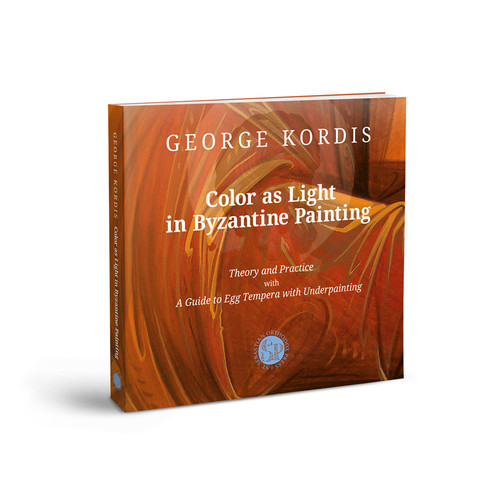The Visage and Gaze in Father Stamatis Skliris’ Byzantine Paintings
- Gift wrapping:
- Options available
Author: Demetrios Kyriazis
This monograph explores the works of renowned iconographer Fr Stamatis Skliris. Esteemed psychiatrist Demetrios Kyriazis provides an insightful analysis of the visage and gaze in Skliris’ Byzantine paintings. The booklet examines both portable icons and frescoes by Fr. Stamatis, emphasizing Kiriazis’ emotional perspective on relational iconography and ontology. This modern approach transcends mere archaeological research, contributing significantly to contemporary iconography and art analysis. The monograph concludes with a catalog of Skliris’ works, highlighting his impact on modern Byzantine painting and offering a fresh understanding of his artistic and spiritual legacy.
From Introduction:
Like most artistic expressions, icon, as a religious image, is a discourse that reveals itself visually, not verbally. We should recall that it was primarily the ancient Greek thought, mythology, religion, and philosophy which attributed to the visual discourse a prominent status and allowed it going hand-in-hand with the verbal discourse of ordinary language as well as of poetic creativity. Despite being an artistic work within space and time, icon functions diachronically as a fundamental means for understanding and expressing not only the divine, but also the social and the human. This is because icon constitutes, by visual means, the formulation of the inner image (representation) of man, through which the soul identifies and comprehends itself. “The soul never deliberates without a mental image”, Aristotle says (De Anima 431a, 15–20). The tremendous significance of this proposition lies in the affirmation of the power of image, namely of the inherent imagined or fantasized representations, either conscious or unconscious. Nowadays, images can be encountered everywhere, such as in modern art, films, television, communications, poetry, and so forth. In psychoanalysis, representation(s) of the unconscious is fundamental for the formation and comprehension of the body image and therefore of one’s emotions, thoughts and, by extension, of the relationship with the “other”. Image/representation is thus an essential element for the constitution and comprehension of the psyche, in general, and of the ego, in particular.


















